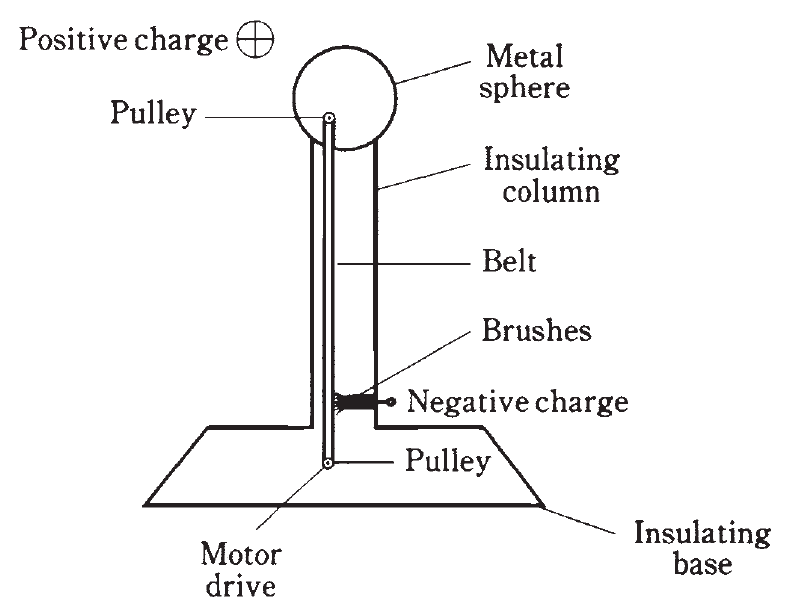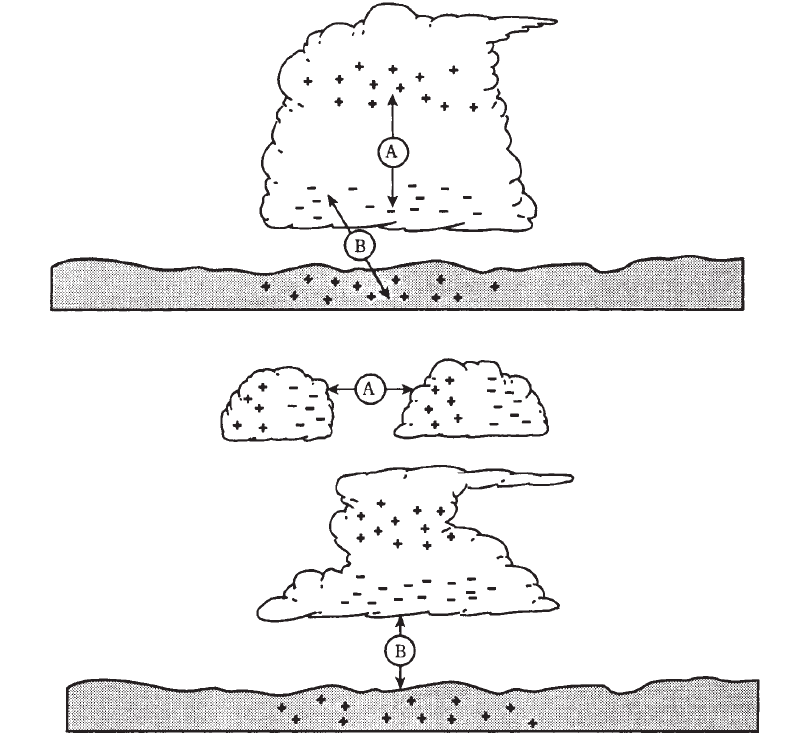


 الفيزياء الكلاسيكية
الفيزياء الكلاسيكية
 الكهربائية والمغناطيسية
الكهربائية والمغناطيسية
 علم البصريات
علم البصريات
 الفيزياء الحديثة
الفيزياء الحديثة
 النظرية النسبية
النظرية النسبية
 الفيزياء النووية
الفيزياء النووية
 فيزياء الحالة الصلبة
فيزياء الحالة الصلبة
 الليزر
الليزر
 علم الفلك
علم الفلك
 المجموعة الشمسية
المجموعة الشمسية
 الطاقة البديلة
الطاقة البديلة
 الفيزياء والعلوم الأخرى
الفيزياء والعلوم الأخرى
 مواضيع عامة في الفيزياء
مواضيع عامة في الفيزياء|
Read More
Date: 15-4-2021
Date: 16-5-2021
Date: 22-4-2021
|
Static electricity
Charge carriers, particularly electrons, can build up, or become deficient, on things without flowing anywhere. You’ve probably experienced this when walking on a carpeted floor during the winter, or in a place where the humidity was very low. An excess or shortage of electrons is created on and in your body. You acquire a charge of static electricity. It’s called “static” because it doesn’t go anywhere. You don’t feel this until you touch some metallic object that is connected to earth ground or to some large fixture; but then there is a discharge, accompanied by a spark that might well startle you. It is the current, during this discharge, that causes the sensation that might make you jump.
If you were to become much more charged, your hair would stand on end, because every hair would repel every other. Like charges are caused either by an excess or a deficiency of electrons; they repel. The spark might jump an inch, two inches, or even six inches. Then it would more than startle you; you could get hurt. This doesn’t happen with ordinary carpet and shoes, fortunately. But a device called a Van de Graaff generator, found in some high school physics labs, can cause a spark this large (Fig. 1). You have to be careful when using this device for physics experiments.

Fig. 1: Simple diagram of a Van de Graaff generator for creating large static charges.
In the extreme, lightning occurs between clouds, and between clouds and ground in the earth’s atmosphere. This spark is just a greatly magnified version of the little spark you get after shuffling around on a carpet. Until the spark occurs, there is a static charge in the clouds, between different clouds or parts of a cloud, and the ground. In Fig. 2, cloud-to-cloud (A) and cloud-to-ground (B) static buildups are shown. In the case at B, the positive charge in the earth follows along beneath the thunderstorm cloud like a shadow as the storm is blown along by the prevailing winds.
The current in a lightning stroke is usually several tens of thousands, or hundreds of thousands, of amperes. But it takes place only for a fraction of a second. Still, many coulombs of charge are displaced in a single bolt of lightning.

Fig. 2: Cloud-to-cloud (A) and cloud-to-ground (B) charge buildup can both occur in a single thunderstorm.



|
|
|
|
"إنقاص الوزن".. مشروب تقليدي قد يتفوق على حقن "أوزيمبيك"
|
|
|
|
|
|
|
الصين تحقق اختراقا بطائرة مسيرة مزودة بالذكاء الاصطناعي
|
|
|
|
|
|
|
قسم شؤون المعارف ووفد من جامعة البصرة يبحثان سبل تعزيز التعاون المشترك
|
|
|